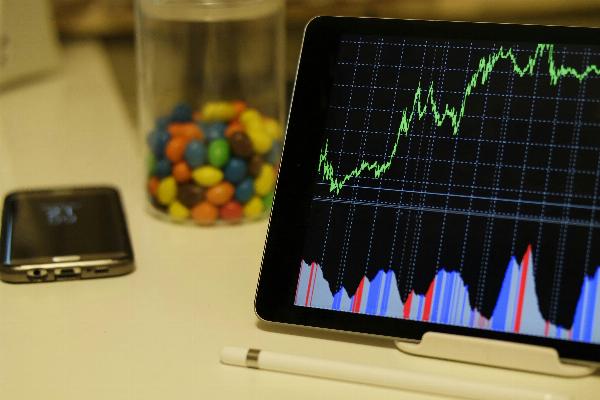Strategies for Timing the Bond Market

Strong 8k brings an ultra-HD IPTV experience to your living room and your pocket.
Timing the bond market can feel like trying to catch lightning in a bottle. But with the right strategies, you can navigate these waters with confidence. By understanding how interest rates, inflation, credit spreads, and yield curves influence bond prices, you can make informed decisions and enhance your investment outcomes. Explore this investment education firm and you can get a chance to learn investing strategies and that too from professional education firms.
Interest Rate Movements: Gauging the Impact on Bond Valuations
When interest rates shift, the impact on bond prices can be immediate and significant. Imagine the bond market as a see-saw; when interest rates rise, bond prices fall, and when rates drop, bond prices climb. This inverse relationship is crucial to understand for anyone looking to time the market effectively.
Central banks, like the Federal Reserve, set the tone by adjusting interest rates based on economic conditions. If the economy heats up, rates might rise to keep inflation in check. Conversely, if the economy slows, lower rates could stimulate spending. For instance, if you hold a bond with a 3% yield and new bonds are issued at 4%, your bond might look less appealing, and its price could drop.
Timing these shifts isn't easy, but staying informed about economic trends and central bank announcements can provide some clues. Ask yourself: How might an upcoming rate hike affect my bonds? Should I hold or sell? These are the kinds of questions that smart investors ponder to stay ahead.
Inflation Indicators: Anticipating Their Effect on Bonds
Inflation is a tricky beast. It erodes the purchasing power of money, which can eat into bond returns. When inflation rises, the fixed income that bonds offer becomes less valuable, leading to lower bond prices. Think of inflation as a slow leak in a balloon; over time, it deflates the value of your investments.
To predict inflation, keep an eye on consumer price indices and economic reports. If prices are rising, inflation could be on the horizon, and bonds might take a hit. For example, during periods of high inflation, like the 1970s, bond prices plummeted because investors demanded higher yields to compensate for the lost purchasing power.
So, how do you protect your investments? Consider diversifying with inflation-protected securities, or TIPS, which adjust for inflation and help preserve your purchasing power. It’s also worth discussing strategies with a financial expert to ensure you're not caught off guard.
Credit Spreads and Default Risk: Timing the High-Yield Bond Market
High-yield bonds, often called "junk bonds," come with higher risks but also the potential for higher rewards. But here’s the catch: these bonds are like the wild child of the bond world—unpredictable and prone to default. Understanding credit spreads—the difference in yield between high-yield bonds and safer government bonds—can help you gauge the market’s risk appetite.
When credit spreads widen, it suggests that investors are nervous about the economy and are demanding higher returns for taking on more risk. Narrow spreads, on the other hand, indicate confidence. For example, if the spread between a corporate bond and a U.S. Treasury bond is growing, it might signal that investors are worried about defaults.
Timing the high-yield market requires a keen eye on economic indicators and market sentiment. Ask yourself: Are you willing to ride the rollercoaster for potentially higher returns? Or is the risk of default too high for your comfort? Balancing this risk is crucial, and consulting with financial experts can help you navigate these choppy waters.
Yield Curve Analysis: Interpreting Signals for Market Entry and Exit
The yield curve is one of the most watched indicators in the bond market. It plots the yields of bonds with equal credit quality but different maturities, typically showing short-term rates lower than long-term rates. But when this curve inverts, meaning short-term rates are higher than long-term rates, it often signals an upcoming recession. Think of the yield curve as a crystal ball that, while not perfect, offers hints about future economic conditions.
An upward-sloping yield curve suggests a growing economy, where longer-term investments are rewarded with higher returns. An inverted curve, however, has been a reliable predictor of economic downturns. For instance, before the 2008 financial crisis, the yield curve inverted, signaling the trouble ahead.
To time your bond investments, consider where we are on the yield curve. Is it steepening, suggesting economic growth? Or flattening, hinting at a slowdown? Pay close attention to these changes, and ask yourself: Is it time to lock in long-term yields or shift to shorter-term bonds? Your ability to read the yield curve can help you make informed decisions and optimize your bond market strategy.
Conclusion
Mastering bond market timing isn't just about luck—it's about knowledge and strategy. By staying alert to economic indicators and market signals, you can better position yourself for success. Remember, it's not just about when you enter or exit the market; it's about making decisions based on solid insights and expert advice. With careful planning, you can navigate the bond market with confidence.
Note: IndiBlogHub features both user-submitted and editorial content. We do not verify third-party contributions. Read our Disclaimer and Privacy Policyfor details.








